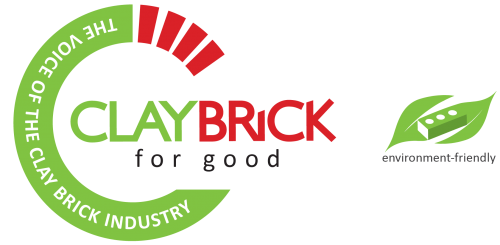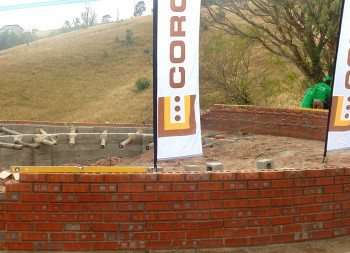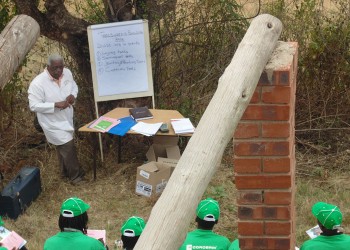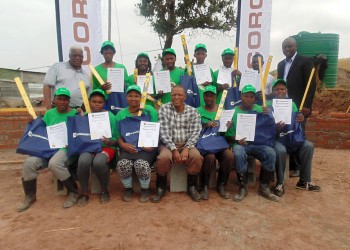Brick "jacket" Improves mud rondavel lifespan
Traditional mud brick rondavels can be easily and affordably upgraded to increase thermal efficiency and aesthetics with the addition of a face brick “skin”. Architect and lecturer, Mthembeni Mkhize came to this conclusion after several years researching various traditional housing structures across the globe, visiting places such as Egypt and the United States of America.
Mkhize has put his ideas into practice at his latest project, The Meseni Zulu Homestead Laboratory Lessons for Cities. The project involved the construction of seven “show” rondavels in the mountain area of Maphumulo, with the outer brick layer of 2 000 of Corobrik’s clay face bricks added to each rondavel of the homestead.has been researching methods to improve on the traditional Nguni housing structure for the past few decades.
“The clay bricks were selected because they are affordable and the high thermal mass helps keep the inside of these homes cool in summer and warm in winter.
The face brick layer is easily constructed and attached to the mud bricks using a wire mesh bond.
“After the rainy season, the lower layer of the wall gets very muddy and each year, usually in December before Christmas when family is arriving, the community paints the rondavel again. This becomes very expensive. The face brick skin will protect the rondavel from the constant weathering and also negated the need for cement plastering and paint which was not only costly, but lacked longevity."
"Clay brickwork offers all the fire resistance qualities that are particularly important in rural landscape settings and rondavel dwellings where open fires are often used for warmth and cooking,” said Mkhize.
The show rondavels will be on display for educational and research initiatives or for government or private enterprises to visit for potential investment opportunities. There is also the possibility of the project becoming a tourist attraction in line with the Western Cape’s Babylonstoren which showcases the original Huguenot dwellings.
Corobrik provides training in basic bricklaying
Corobrik contributed further by providing training in basic bricklaying for 12 candidates selected by the local community, providing them with an invaluable skill which will allow them to build in the area they reside.
The week long course, which was headed by Corobrik Building Training Co-ordinator, Derek Dimba, was done on site, with each trainee being educated in basic bricklaying and then moving on to build a complete rondavel. Every trainee also received a certificate and complimentary set of bricklaying tools consisting of a trowel, spirit level, builder’s line and tape measure.
Mkhize said this training was providing lifelong skills that could only benefit the greater community.
Corobrik’s Allin Dangers said Mkhize had made the right selection in Corobrik’s face brick range.He said the Burnt Apricot face brick fitted the project in terms of affordability, colour and texture and the required durability to ensure a long lifecycle.
“We are really proud to be a part of this exciting initiative. The outer layer of clay face brick is an innovative yet complementary application in the context of a traditional building concept. The skin of face brick is set to further enhance thermal comfort, safety and security, also contributing to that important sense of status that comes with owning a clay face brick home.”
This house construction type will contribute to the lowering of energy demands on the national grid and boost power generation, helping the government to meet its electricity needs for future housing programmes.
The addition of a wood and coal stove in the centre of the rondavel added to the thermal efficiency, allowing for the cooking of food, heating of the home in winter and promoting a central focal point for the family.
“The stove has a chimney taking the fumes out the rondavel which means no chance of suffocation. It also lowers the risk of fire.”
Another important benefit of this construction method is sense of pride that comes with living in a traditional building that has been enhanced with a face brick finish.
“The homes are set to meet the aspirations of the prospective homeowners to live in aesthetically pleasing houses which are built using quality materials that lend dignity and provide a sense of home,” he said.
However, Mkhize said at the heart of the project is his true passion as an architect, which is to provide people with something of which they can be proud.
“As architects we look to create a product that will influence society at large, that can be used by millions of people and that improve the quality of life.”




